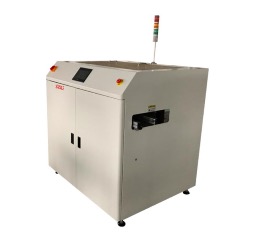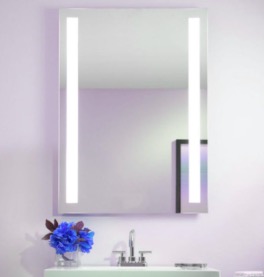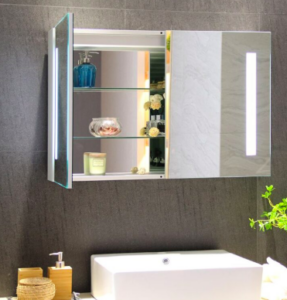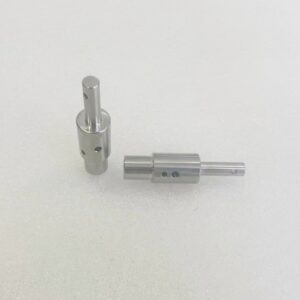Laser welding machine is an option for companies looking to increase productivity and reduce the cost of welding operations. Laser welding machines are more accessible and affordable than ever before – providing faster stroke and welding consistency compared to other welding processes in automated welding applications.
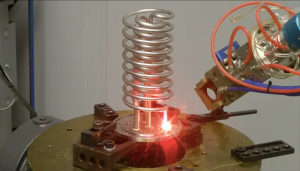
Table of Contents
ToggleLaser welding machines improve productivity and save money
Finding ways to increase productivity and save money is an important factor in any welding application. Companies often look at technological advances to achieve these goals, but many operations may not consider laser welding — perhaps considering it too expensive or complex. Advances in laser welding technology have made it more accessible and affordable than ever before. The process also provides significant productivity advantages that can achieve a rapid return on investment. Is laser welding suitable for your sheet metal operation? Consider these key factors and benefits.
Benefits of laser welding machine
In some applications, laser welding machine moves 5 to 10 times faster than TIG welding and 3 to 5 times faster than MIG welding. It is also a good substitute for resistance spot welding in many applications. Automatic welding of sheet metal is one example where changing laser welding can provide significant productivity advantages. Because the laser welding process provides high travel speeds and low heat input, it helps prevent this usually thin material from burning through. There are also prefabricated laser welding systems on the market that are easy to install and thus set up with minimal downtime.
Laser welding advancements
The use of laser welding machines continues to grow in automated welding applications, thanks to advances that make the technology more accessible and affordable.
Laser welding uses lasers to join metal sheets. Traditionally, high-power lasers use carbon dioxide as a medium with a wavelength of about 10 microns. Lasers of this wavelength cannot travel through fiber optic cables, making it difficult to automate the laser welding process.
In this respect, technological advances have pushed the industry forward. The development of 1-micron wavelength lasers means that lasers can be transmitted through optical cables, making it easier for lasers to automate welding.
In addition, lasers with a 1-micron wavelength are usually powered by a diode. As manufacturers get better at making powerful diodes, fewer of them are needed to power these lasers. This will continue to reduce the cost per unit of power for laser welding systems.
Gaining advantages on sheet metal
Parts that have traditionally been TIG welded and require a high-quality appearance are ideal for conversion to laser welding processes. Sheet metal is usually very thin and requires low heat input during welding. It is also often used in applications that require high aesthetic quality or aesthetic effect, such as electrical appliances, signs, or elevator panels.
In addition, laser welding sometimes does not require the use of filler metals or shielding gases. This makes the profile of the weld so low that it does not need to be polished after the weld is finished — saving time and money and helping to improve operating efficiency. For example, a common sheet metal application is manufacturing electrical boxes. For MIG welds, post-weld grinding is usually required to remove excess weld reinforcement material at the outer corners. Switching to laser welding eliminates the time and money spent on post-weld cleaning.
As mentioned earlier, laser welding can travel much faster than TIG or MIG welding, which can help companies improve productivity and efficiency, which can have a positive impact on profits.
Conduction vs. keyhole mode
The welding system switches between conduction mode and keyhole mode depending on the energy density.At lower energy density, the laser has a larger spot and lower power. This is the conduction mode. In this mode, the surface is heated and the heat is transferred through the part by conduction. Conduction patterns usually have a very calm puddle, similar to TIG welding, and are ideal for surface welds that must be precise, such as the outer corners of boxes or signs.
As the power level increases — say, a 2mm spot shrinks to 0.6mm in diameter — the energy density becomes even higher. This deeper penetration weld with higher energy density is the keyhole mode.
Keyhole mode can be used to Pierce two pieces of material stacked together to produce a weld. When light from the laser hits the top surface, it evaporates and penetrates the two parts, filling the weld as fast as the laser moves. This makes keyhole mode laser welding a good alternative for applications where stacked or overlapping materials previously required processes such as resistance spot welding. Keyhole mode laser welding is more efficient than resistance spot welding, which uses two electrodes and requires contact with the top and bottom of the material being welded.
The same laser welding system is available for conduction mode and keyhole mode. This changes the mode from conduction to keyhole by increasing the power or making the laser’s spot size smaller.
Consider pre-engineered systems
Implementing a pre-designed laser welding system can bring many benefits. Prefabricated systems available on the market offer ease of use and quick and easy installation.
Some of the prefabricated units are built on a platform that can be pre-assembled for transport — so they can be thrown into your welding operation and are usually up and running quickly on the same day. This makes integrating laser welding units into your operation as easy as any other robotic welding system.
The main difference between prefabricated laser welding systems and other prefabricated robotic systems is that all light in the welding area of the laser system must be contained within the cell for safety reasons. When all light is contained within the welding cell, the laser welding system will receive a class 1 rating, meaning that workers outside the cell do not require additional eye protection. This provides greater flexibility in the placement of laser welding units on the shop floor or factory floor.
Some welding system manufacturers also provide test LABS that can process sample parts in laser welding systems. This helps you determine if the laser system is suitable for your application.
Significant productivity gains
Laser welding machine is an unknown or unexplored option for many manufacturers with automated welding applications, but it is as easy to implement as other robotic welding systems. The fast travel speed and low heat input of laser welding make it particularly suitable for sheet metal welding applications that require precision and aesthetics.
For operations that now use MIG, TIG, or resistance spot welding, switching to laser welding can significantly improve productivity — saving time and money while still producing high-quality welds.
0